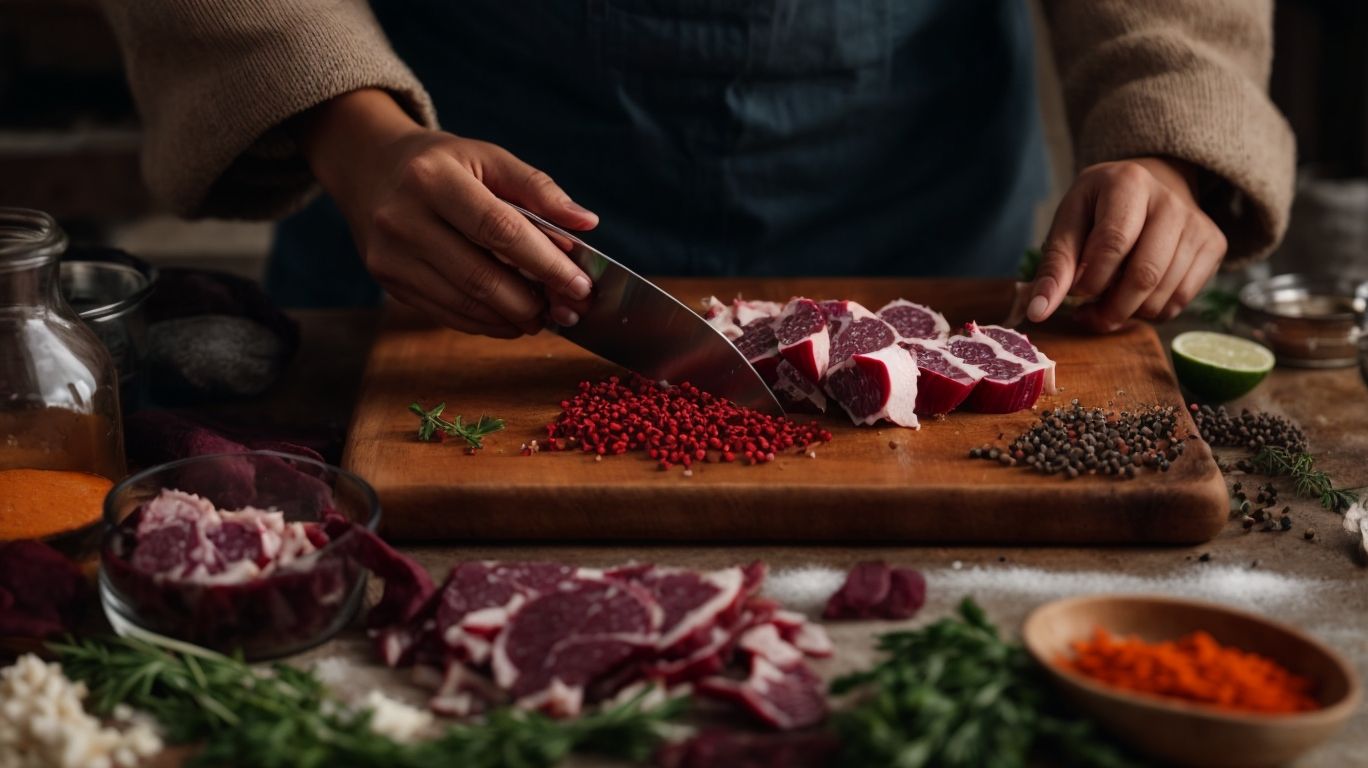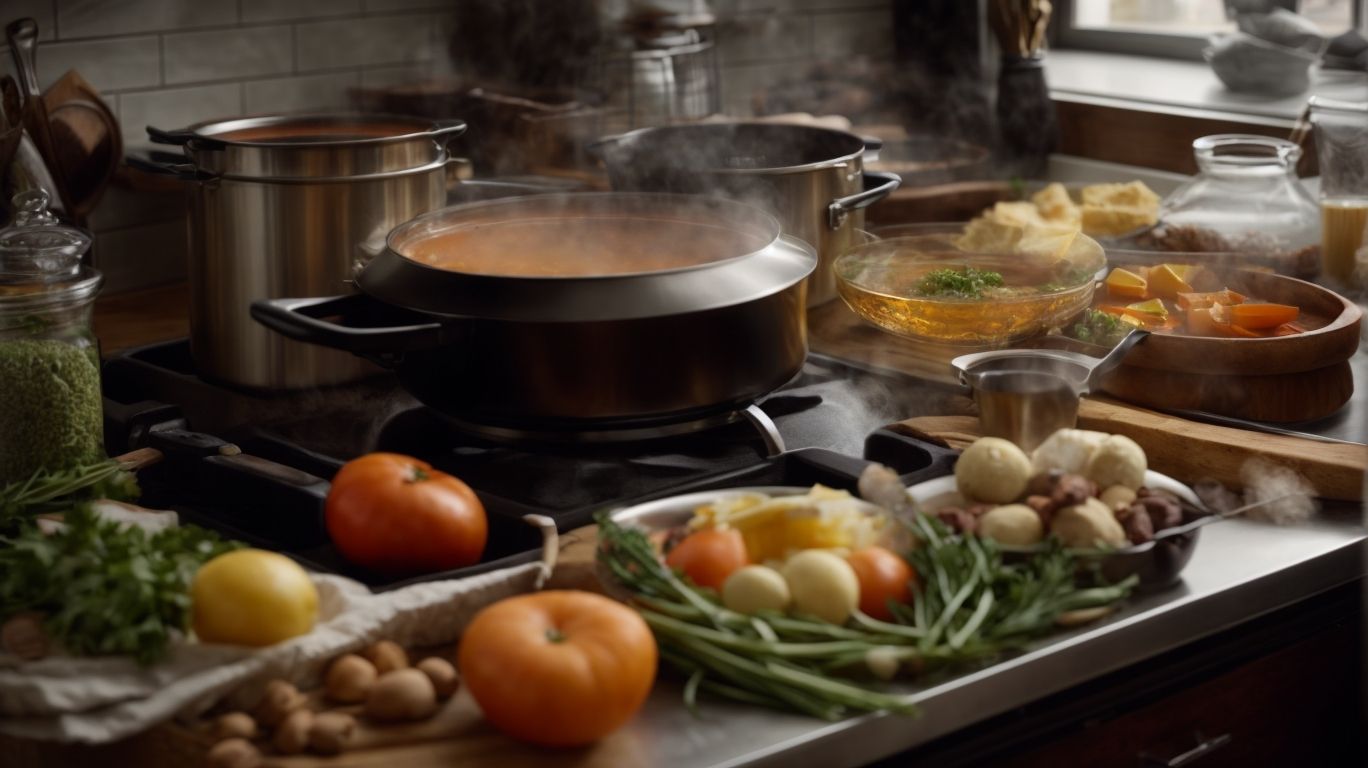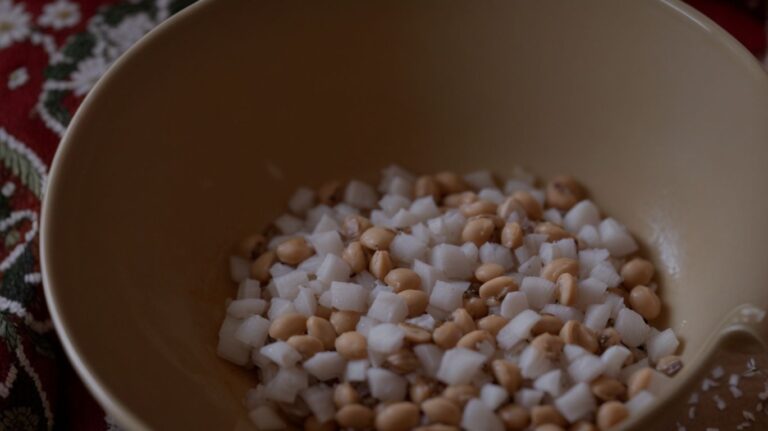How to Cook Goat Meat for Stew?
Curious about goat meat and how to cook it for a delicious stew?
We explore the different cuts of goat meat, its nutritional value, and how to choose the best meat for stew.
Discuss the step-by-step process of preparing and cooking goat meat stew using traditional stovetop, slow cooker, and Instant Pot methods.
Get tips on adding flavorful spices, using the right cooking techniques, and serving and storing your goat meat stew for a memorable dining experience.
Join us on a culinary journey to create a mouthwatering goat meat stew that will impress your family and friends.
Key Takeaways:
What is Goat Meat?
Goat meat is a popular choice for preparing flavorful stews and dishes, known for its unique taste and tenderness that adds a delightful twist to meals.
Whether it’s the succulent chunks simmered in rich curries in Indian cuisine or the slow-cooked Moroccan tagines bursting with aromatic spices, goat meat offers a diverse canvas for culinary creativity.
In African cuisine, goat meat is often marinated in a blend of herbs and spices before grilling to perfection, delivering a tantalizing smoky flavor.
Not just limited to traditional dishes, goat meat has also found its way into modern fusion recipes, reinventing classic stews with a contemporary flair.
Different Cuts of Goat Meat
Understanding the different cuts of goat meat is essential for crafting the perfect stew or dish, as each cut offers a distinct texture and flavor profile that can elevate the overall culinary experience.
Regarding goat meat, there are several popular cuts to choose from, each with its unique qualities. The shoulder is a versatile cut that is well-suited for slow cooking methods like braising or stewing, resulting in tender and flavorful meat. On the other hand, the loin is lean and tender, making it ideal for grilling or pan-searing to retain its natural juiciness.
For dishes requiring longer cooking times, such as curries or soups, the shank is a great choice due to its rich, gelatinous texture that adds depth to the dish. The ribs are perfect for barbecuing or roasting, as they have a good balance of meat and fat, ensuring a juicy and succulent outcome.
Nutritional Value of Goat Meat
Exploring the nutritional value of goat meat reveals its richness in essential nutrients, making it a healthy and flavorful choice for various recipes and blends.
Goat meat is a great source of lean protein, offering a significant amount of amino acids crucial for muscle growth and repair. It also contains iron, an essential mineral that aids in oxygen transport within the body. Goat meat is rich in vitamin B12, supporting nerve function and red blood cell production. These nutrients not only boost the immune system but also play a key role in maintaining overall health.
How to Choose the Best Goat Meat for Stew?

Credits: Poormet.Com – Jordan Walker
Selecting the best goat meat for your stew involves considering factors like freshness, quality, and texture to ensure a delicious and satisfying meal.
Regarding freshness, opt for meats with a pinkish hue and a slightly moist surface. This indicates recent processing and maintains the natural flavors. For texture, look for cuts that are marbled with fine streaks of fat, ensuring tenderness and juiciness in every bite. To guarantee quality, it is advisable to source goat meat from reputable suppliers who prioritize animal welfare and sustainable practices. By choosing meat that meets these criteria, you can elevate the flavors and richness of your stew, creating a truly memorable dining experience.
Freshness and Quality
Ensuring the freshness and quality of goat meat is paramount when selecting ingredients for a stew, as these factors directly impact the taste and overall dining experience.
Choosing the right source for your goat meat plays a crucial role in maintaining optimal freshness. Quality goat meat sourced from reputable suppliers ensures that the meat is flavorful, tender, and free from any unwanted odors. When preparing a stew, the freshness of the goat meat is key to achieving a delicious and aromatic dish that will leave your taste buds satisfied. By prioritizing the source and quality of your goat meat, you can elevate your stew to a whole new level of culinary excellence.
Color and Texture
Examining the color and texture of goat meat can provide valuable insights into its freshness and tenderness, guiding the marinating process for enhanced flavor and succulence.
When assessing goat meat, look for a deep red or pink color, which indicates freshness. The meat should have a fine texture with a modest amount of fat marbling, ensuring tenderness when cooked. Avoid meat that appears pale or discolored, as it may signify age or improper handling.
To further elevate the flavor profile and tenderize the meat, consider marinating it in a mixture of acidic ingredients like lemon juice or vinegar, along with flavorful herbs and spices. The marinade not only infuses the meat with delicious flavors but also breaks down tough fibers, resulting in a more succulent dish.
Source of Meat
Understanding the source of goat meat is crucial for ensuring its quality and flavor, especially when considering marinating techniques that can benefit from high-grade ingredients like vinegar.
When you source your goat meat from reputable providers, you can be confident in the freshness and taste it will bring to your stew. High-quality ingredients, such as vinegar, play a key role in the marinating process, infusing the meat with depth and richness of flavor. The acidity of vinegar tenderizes the meat while adding a delightful tanginess that complements the natural earthiness of the goat. It’s this attention to detail in sourcing and marinating that elevates a simple stew into a culinary delight.
Preparing Goat Meat for Stew

Credits: Poormet.Com – Jeffrey Young
Preparing goat meat for a delicious stew involves essential steps such as cleaning and trimming the meat, followed by marinating it with flavorful ingredients to enhance its taste and tenderness.
After thoroughly washing the goat meat with cold water and patting it dry, the next crucial step is to trim off any excess fat to avoid overpowering the stew with an oily taste.
Once the meat is cleaned and trimmed, it’s time to create a flavorful marinade. A combination of ingredients such as garlic, ginger, herbs, and spices can work wonders in infusing the meat with a rich taste profile.
Allow the goat meat to marinate for at least a few hours, or ideally overnight, in the refrigerator. This extended marinating time helps the flavors to penetrate deep into the meat fibers, resulting in a more succulent and flavorful stew.
Cleaning and Trimming the Meat
Cleaning and trimming goat meat before cooking is essential to remove impurities and excess fat, ensuring a clean and flavorful base for your stew.
Begin by rinsing the goat meat under cold running water to remove any dirt or debris. Then, pat it dry with paper towels. Using a sharp knife, carefully trim off any visible fat from the meat. Next, inspect the meat for any tough membranes or connective tissue that should be removed.
It’s crucial to select fresh, high-quality ingredients for your stew. Opt for organic if possible, as this will enhance the flavors of your dish. Focus on the cleaning process to ensure the meat is free from any foul odors or off-putting flavors that can result from improper handling.
Marinating the Meat
Marinating goat meat is a key step in enhancing its flavor and tenderness, with recipes often calling for a blend of aromatic spices and ingredients that simmer together to create a rich and savory dish.
When marinating goat meat for stew, the choice of ingredients plays a crucial role in developing its taste profile. Common additions like garlic, ginger, and vinegar not only add depth but also aid in tenderizing the meat. The art of marinating involves allowing the meat to soak up the flavors overnight, ensuring a robust infusion before the simmering process begins. This slow simmer is where magic happens; as the meat cooks low and slow, it absorbs the flavors, resulting in a melt-in-your-mouth texture that is irresistible.
Cooking Goat Meat Stew
Cooking a delectable goat meat stew involves various methods such as traditional stovetop cooking, slow cooker preparation, and utilizing modern appliances like the Instant Pot for convenient and flavorful results.
When considering traditional stovetop cooking, the process allows for direct heat control and the ability to monitor flavors as they develop. This method often involves browning the meat first for enhanced depth of flavor. On the other hand, using a slow cooker offers the convenience of setting it and forgetting it, resulting in tender and juicy meat after hours of gentle cooking. Modern appliances like the Instant Pot provide the best of both worlds, combining speed and flavor retention in a single device, making the stew making process quick yet tasty.
Traditional Stovetop Method
The traditional stovetop method of cooking goat meat stew involves simmering the ingredients slowly to allow the flavors of the spices and meat to meld together, resulting in a rich and aromatic dish.
This method of slow simmering is crucial as it tenderizes the goat meat, making it succulent and flavorful. The carefully selected spices, such as cumin, coriander, and cinnamon, add depth and complexity to the stew, creating a harmonious blend of flavors.
The process of traditional cooking not only enhances the taste but also infuses the dish with cultural significance, connecting generations through shared meals and recipes passed down through time.
Slow Cooker Method
Using a slow cooker to prepare goat meat stew offers a convenient and hands-off approach, allowing the flavors of the ingredients to develop slowly and create a tender and flavorful dish.
Regarding the benefits of slow cooking, the low and consistent heat of the slow cooker helps break down tough cuts of meat like goat, resulting in a melt-in-your-mouth texture that is incredibly satisfying. The prolonged cooking time allows the rich flavors of spices, herbs, and vegetables to meld together, intensifying the overall taste of the stew.
Key ingredients such as onions, garlic, tomatoes, and a blend of aromatic spices work harmoniously in the slow cooker environment, infusing the goat meat with layers of complex and savory flavors. The gentle simmering process ensures that every bite is infused with the essence of the ingredients, transforming simple components into a hearty and comforting dish.
Instant Pot Method
Leveraging the Instant Pot for cooking goat meat stew offers a time-efficient solution that retains the flavors and tenderness of the meat, thanks to its pressure cooking capabilities that infuse the dish with rich aromas and tastes.
When using an Instant Pot, the sealed environment allows the meat to cook faster than traditional methods, ensuring that the goat meat remains juicy and flavorful. The pressure-cooking method also helps to break down tough connective tissues in the meat, resulting in tender bites with every spoonful. One of the advantages of using an Instant Pot for stew is that the intense pressure helps the spices penetrate deep into the meat, enhancing the overall flavor profile.
Tips for a Delicious Goat Meat Stew
Enhancing the flavor and appeal of your goat meat stew involves incorporating a variety of spices, using the right cooking techniques, and adding a mix of vegetables and other key ingredients for a well-rounded and satisfying meal.
When selecting spices for your stew, consider a blend of aromatic choices like cumin, paprika, and coriander to infuse rich flavors. Opting for slow cooking methods such as braising or simmering allows the meat to tenderize and absorb the seasonings properly.
To create depth in your stew, experiment with a colorful array of vegetables such as carrots, bell peppers, and potatoes, offering both taste and vibrant hues. Adding a splash of tanginess with tomatoes or a hint of sweetness with a touch of honey can elevate the overall taste profile.
Adding Flavorful Spices
Infusing your goat meat stew with a blend of flavorful spices like thyme, cumin, and allspice can elevate the taste profile, creating a harmonious and aromatic dish that delights the senses.
These spices not only add a depth of flavor but also play a crucial role in balancing the richness of the meat. Thyme brings a subtle earthiness, cumin offers warm and nutty notes, while allspice contributes a hint of sweetness and warmth.
The magic lies in the way these spices blend together, creating a symphony of flavors that infuse into the tender goat meat, transforming a simple stew into a culinary masterpiece.
Each spice has its unique contribution, enhancing the overall complexity of the dish. The spices not only season the stew but also evoke a sense of warmth and comfort that is perfect for cozy nights or family gatherings.
Using the Right Cooking Techniques
Mastering the right cooking techniques, such as simmering or braising, is crucial for ensuring that your goat meat stew turns out tender, flavorful, and perfectly cooked to delight your family and guests.
Simmering goat meat stew involves cooking it gently over low heat, allowing the flavors to meld together while keeping the meat juicy and tender. This method is ideal for tougher cuts of goat meat, breaking down the connective tissues to create a melt-in-your-mouth texture.
On the other hand, braising goat meat stew combines both wet and dry heat, resulting in a rich, deeply flavored dish. By searing the meat first and then slowly cooking it in liquid, the stew becomes tender and infused with a complex taste profile.
Adding Vegetables and Other Ingredients
Incorporating a mix of fresh vegetables like potatoes, carrots, and green peas into your goat meat stew can not only enhance its nutritional value but also add vibrant colors, textures, and flavors to the dish for a wholesome and satisfying meal.
Aside from their visual appeal, these vegetables bring a wealth of benefits to your stew.
- Potatoes, with their earthy taste and hearty texture, act as a wonderful thickening agent, making the stew more filling and comforting.
- Carrots, known for their natural sweetness and beautiful orange hue, offer a dose of vitamin A and antioxidants that promote good health.
- Green peas, vibrant and slightly sweet, contribute a pop of freshness and a boost of protein to the dish, creating a more well-rounded and balanced meal.
Serving and Storing Goat Meat Stew
Knowing how to serve and store goat meat stew ensures that your culinary creation retains its flavors and freshness, offering a delightful meal for family gatherings, holidays, and special occasions.
Regarding serving goat meat stew, it’s all about presentation. A beautifully decorated table setting can elevate the dining experience. Consider garnishing the stew with fresh herbs or a drizzle of olive oil for that extra touch. Remember to portion the stew appropriately to satisfy your guests’ appetites without waste.
After the feast, proper storage is key. To maintain the stew’s rich taste, transfer any leftovers into airtight containers. Refrigeration is the best choice, but if freezing, ensure to cool the stew completely before sealing. Labeling the containers with date and contents helps you keep track of freshness.
Serving Suggestions
Serving goat meat stew alongside aromatic rice or fried goat meat makes for a satisfying meal that caters to diverse palates and preferences, ideal for festive occasions like Christmas, Thanksgiving, or cultural celebrations.
For a delightful dining experience, consider pairing the rich flavors of goat meat stew with traditional sides such as cornbread, collard greens, or fried plantains. These side dishes complement the hearty stew and add a variety of textures and tastes to the meal.
Serving a refreshing cucumber and mint salad on the side can provide a light and crisp contrast to the savory depth of the stew. The coolness of the salad pairs wonderfully with the warm, comforting flavors of the stew.
Proper Storage and Reheating
Properly storing and reheating goat meat stew is essential for preserving its flavors and texture, ensuring that leftovers can be enjoyed later without compromising on taste or quality.
When storing goat meat stew, it’s best to use airtight containers to limit exposure to air, which can lead to quicker spoilage. Glass or plastic containers with tight-fitting lids are great options for maintaining freshness. Storing the stew in smaller portions can make reheating more efficient and help preserve flavors.
Refrigeration is key to keeping goat meat stew safe for consumption. Store it in the coldest part of your fridge, ideally at temperatures below 40°F (4°C). Always label the containers with dates to track freshness and consume within 3-4 days to avoid any risks of spoilage.
When reheating goat meat stew, use a microwave-safe dish or heat it on the stove. Stirring frequently while reheating helps distribute heat evenly and maintain the flavors. Make sure to heat it thoroughly to a safe internal temperature of 165°F (74°C) to destroy any harmful bacteria.
Frequently Asked Questions
What is the best way to cook goat meat for stew?
The best way to cook goat meat for stew is to first marinate the meat in a mixture of herbs and spices for at least 2 hours, then slow cook it in a pot over low heat for 2-3 hours until tender.
How long does it take to cook goat meat for stew?
Cooking goat meat for stew may take anywhere from 2-3 hours, depending on the size and cut of the meat. It is important to cook it slowly over low heat to ensure the meat becomes tender.
What are some recommended herbs and spices to use when cooking goat meat for stew?
Some popular herbs and spices to use when cooking goat meat for stew include garlic, thyme, rosemary, bay leaves, paprika, and cumin. You can also add in your own personal favorites to customize the flavor.
Is it necessary to marinate goat meat before cooking it for stew?
While not necessary, marinating goat meat before cooking it for stew can help to enhance the flavor and make the meat more tender. If you are short on time, you can skip this step, but it is highly recommended.
Can I use a slow cooker to cook goat meat for stew?
Yes, a slow cooker is a great tool to use for cooking goat meat for stew. Simply add all the ingredients, including the marinated meat, into the slow cooker and let it cook on low heat for 6-8 hours or on high heat for 4-6 hours.
What are some tips for making the best goat meat stew?
Some tips for making the best goat meat stew include using quality ingredients, slow cooking the meat, adding in a variety of herbs and spices for flavor, and letting the stew simmer for at least 30 minutes before serving to allow all the flavors to meld together.






